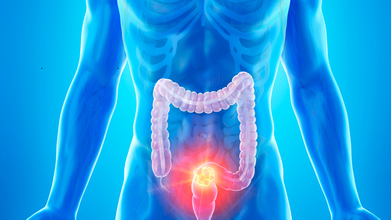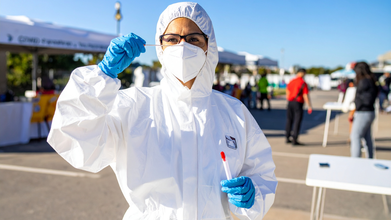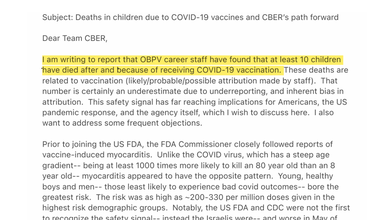- Health Conditions A-Z
- Health & Wellness
- Nutrition
- Fitness
- Health News
- Ayurveda
- Videos
- Medicine A-Z
- Parenting
Does Coffee Hasten Biological Aging Or Slow It Down?

(Credit-Canva)
Being frail comes with age, your joints become weaker, your muscles lose their strength, and your skin slowly loses its elasticity. A lot of people wonder why aging people move so slowly or have difficulty doing simple tasks, but as they age, they realize that it's because there is a constant pain that accompanies moving.
There are a lot of things that can affect aging, something that many people have raised concern over. Certain foods, lifestyle activities and conditions that can age your body and organs faster than their biological age. Experts and studies have explained that to slow this rapid aging, one must incorporate many changes in their life, things like eating unprocessed food, and avoiding foods with excess saturated fats, added sugar and sodium etc., one must also live a healthy lifestyle with proper exercise and healthy choices like early mornings and appropriate sleep.
Coffee Consumption And Healthy Aging
People also suggest one should avoid things like coffee and drinks with excess caffeine. However, a new study shows that it could help you slow down aging. Published in the European Journal of Nutrition, the study suggests that regularly drinking coffee might play a role in delaying physical ageing and frailty. The research indicates that coffee drinkers could potentially experience fewer of the undesirable symptoms associated with getting older.
Specifically, the study revealed that consistently consuming four to six or more cups of coffee (each 125ml) daily is linked to a lower risk of developing frailty in older adults.
What Is Considered Frail and How Does Coffee Affect It?
This study was funded by the Institute for Scientific Information on Coffee (ISIC) and they wanted to find the relationship between coffee consumption and how it is linked to frailty. Using Fried’s five component of frailty, which has been determined as a useful criteria for inpatient assessment by Clinical Interventions in Aging, which are,
- Unintentional weight loss
- Feelings of weakness
- Exhaustion
- Slow walking speed
- Low levels of physical activity.
What Did The Study Find?
Building on previous studies that associated coffee with benefits like improved brain function and protection against inflammation-related diseases, they looked into long term benefits of coffee.
Researchers conducted a thorough seven-year analysis of 1,161 adults aged 55 and over, using data from the Longitudinal Ageing Study Amsterdam (LASA). The study focused on the relationship between how much coffee participants drank and the presence and development of frailty.
The researchers suggested that the antioxidants present in coffee may be a key reason for its potential to reduce frailty. These antioxidants could help lessen inflammation, combat muscle loss (sarcopenia), and protect against muscle damage. Furthermore, coffee might improve how the body uses insulin and absorbs glucose in older individuals. Their findings showed that daily coffee consumption can reduce frailty in older population.
Food Safety Regulations To Keep In Mind
These findings should be considered alongside the European Food Safety Authority's (EFSA) guidelines on caffeine consumption. EFSA considers up to 400mg of caffeine daily (equivalent to three to five cups of coffee) to be a moderate and safe amount for most adults. However, individuals with high sensitivity to caffeine or high blood pressure should limit their coffee intake. The NHS also advises pregnant women to limit their caffeine consumption to no more than 200mg per day, roughly equivalent to two cups of coffee.
What Men Should Know About Their Prostrate Health After 50, According To Doctor

Credits: Canva
As men step into their 50s and beyond, prostate health becomes an essential part of overall wellbeing. The gland naturally undergoes changes with age, many of which are not cancerous but can still cause discomfort, disrupt daily routines, and affect long-term health. Awareness, early screening, and preventive habits play a crucial role in staying ahead of potential problems.
Why the Prostate Changes With Age
One of the most common age-related concerns is benign prostate hyperplasia (BPH), a non-cancerous enlargement of the prostate. This happens due to hormonal shifts that cause the gland to grow slowly over time.
“Most men assume urinary symptoms are just a normal part of aging, but that mindset often delays treatment,” says Dr. Vineet Malhotra, Director and Founder, VNA Hospital. “BPH itself is not dangerous, but if ignored, it can seriously affect quality of life and even lead to complications.”
A larger prostate can press against the urethra, causing symptoms such as:
- Frequent urination
- Weak or interrupted urine flow
- Difficulty starting to urinate
- A feeling of incomplete bladder emptying
- Waking up multiple times at night to urinate
These symptoms often creep up gradually, making them easy to dismiss until they start interfering with sleep, work, or general comfort.
The Importance of Screening for Prostate Cancer
While BPH is not cancer, men must remain vigilant about prostate cancer, especially because its risk rises with age.
“Prostate cancer in early stages is usually silent,” explains Dr. Malhotra. “That is exactly why screening becomes so important once men cross 50.”
Two common screening tools include:
- PSA (Prostate-Specific Antigen) test
- Digital Rectal Examination (DRE)
These tests help detect abnormalities long before symptoms appear. Early detection not only improves treatment outcomes but also prevents unnecessary anxiety or uncertainty.
Men should also stay alert for red-flag symptoms, including persistent pelvic pain, unexplained weight loss, blood in urine or semen, and sudden urinary changes.
Lifestyle Choices That Support Prostate Health
Beyond medical screening, everyday habits have a strong influence on prostate wellbeing.
Dr. Malhotra emphasizes the role of lifestyle:
“A balanced diet, regular exercise, and maintaining a healthy weight can significantly reduce inflammation and support better prostate function.”
Healthy habits that help include:
- A diet rich in antioxidants (tomatoes, berries, leafy greens)
- Omega-3 sources like fatty fish and walnuts
- Limiting alcohol and caffeine
- Staying well-hydrated
- Avoiding smoking
- Regular physical activity
These choices not only support the prostate but also improve urinary health and hormonal balance.
Since stress can worsen urinary symptoms, incorporating yoga, meditation, or deep-breathing practices also makes a noticeable difference.
Breaking the Silence Around Prostate Health
One of the biggest challenges is the reluctance many men feel when discussing urinary or sexual symptoms.
“Men often suffer quietly because these issues feel too personal,” says Dr. Malhotra. “But silence delays diagnosis and treatment. Open conversations can literally save lives.”
Families, caregivers, and partners can play a supportive role by encouraging early checkups and normalizing discussions around prostate health.
The Bottom Line: Proactive Care Matters
With rising life expectancy and a more active older population, prioritizing prostate health is no longer optional—it’s essential.
Early diagnosis, informed decision-making, and evidence-backed treatments give men the chance to maintain independence, comfort, and quality of life well into their later years.
As Dr. Malhotra puts it, “Prostate health is not just a medical concern—it’s a foundation for staying energetic, confident, and healthy as you age.”
40s Bring Lots Of Changes, Says Doctor, Take Care Of Your Bone, Joint And Urinary Health

Credits: Canva
Crossing 40 often brings subtle but noticeable changes in how your body feels and functions. Many people brush off early signs like morning stiffness, reduced flexibility, or frequent bathroom visits, not realizing these are part of natural age-related changes. These shifts primarily affect the bones, joints, and urinary system, areas that quietly define everyday comfort.
According to Dr. Aashish Chaudhry, Managing Director & Head, Orthopedics & Joint Replacement, Aakash Healthcare, these changes are expected but shouldn’t be ignored. “After 40, the body’s regenerative capacity slows down, particularly in bones and joints. Being aware of these changes helps in early prevention and better long-term outcomes,” he says.
Bone Health: Slower Regeneration and Higher Risk of Fractures
Bone density gradually declines with age due to hormonal changes. Women experience a drop in estrogen, and men see reduced testosterone levels—both crucial for supporting bone formation.
“Lower hormone levels weaken the natural bone-building cycle,” explains Dr. Chaudhry. “This increases the risk of fractures and even slows down healing when injuries occur.”
Key concerns include:
- Reduced bone density
- Higher risk of osteoporosis
- Slower fracture recovery
To counter this, weight-bearing exercises and strength training are crucial. A diet rich in calcium, vitamin D, and protein supports bone metabolism and maintains strength.
Joint Health: Wear, Tear, and Early Stiffness
Years of repetitive movements, combined with declining collagen production, make joints more vulnerable. Cartilage becomes less elastic, leading to stiffness, reduced mobility, and the early onset of osteoarthritis.
“Many people notice joint pain but assume it's just fatigue,” says Dr. Chaudhry. “In reality, early joint wear can be detected and managed much earlier with the right interventions.”
What contributes to joint discomfort after 40?
- Natural wear and tear
- Reduced cartilage elasticity
- Slower lubrication of joint spaces
- Early degenerative changes
Flexibility-focused exercises like yoga or stretching, along with anti-inflammatory foods such as leafy greens, berries, nuts, and omega-3 sources, can ease stiffness and protect long-term mobility.
Urinary Changes: More Common Than You Think
While both men and women experience changes in urinary patterns, men often notice symptoms more prominently due to prostate enlargement. A bigger prostate narrows the urinary passage, causing:
- Frequent urination
- Weak urinary stream
- Urgency or incomplete emptying
- Night-time urination
Women, on the other hand, may struggle with pelvic floor weakness, leading to leakage or urgency.
Dr. Chaudhry notes, “These symptoms are common after 40, but they shouldn’t be normalized. Early evaluation can prevent chronic discomfort.”
Hydration remains essential. Cutting back on caffeine, alcohol, and salty foods can also lighten urinary symptoms and prevent kidney irritation.
Lifestyle Adaptations That Make a Real Difference
Shifting from reactive to preventive care is key after 40. The goal isn’t to stop ageing—it's to age comfortably and confidently.
What helps:
- Strength and mobility exercises
- Pelvic floor training
- Maintaining a healthy weight
- Regular health screenings (bone density, kidney tests, prostate evaluation)
- Stress management through yoga, meditation, or deep breathing
- Consistent sleep routines to support tissue repair
“Think of this stage as preparing your body for the next decades,” says Dr. Chaudhry. “With the right lifestyle adjustments, most people can maintain excellent mobility and function well into older age.”
Leaked FDA Memo Sparks Fierce Debate Over Rare Vaccine-Linked Child Deaths

Credits: Canva
After the Thanksgiving, on Friday, the Food and Drug Administration (FDA)'s top vaccine regulator, Vinay Prasad made a clam that shocked the public-health established. "For the first time, the US FDA will acknowledge that COVID-19 vaccines have killed American children," he wrote in a leaked email to his staff, as reported by The Atlantic and The Washington Post.

The agency has identified that at least 10 children died after getting COVID shots.
The email has been perceived by physicians as a "threat". A response from 12 former FDA commissioners, published in The New England Journal of Medicine on Wednesday, called Prasad's memo "a threat to evidence-based vaccine policy and public health security". All of the potential vaccine related deaths reported to government were already reviewed by the agency's staff, and had reached "different conclusions", wrote the former commissioners.
Elsewhere, doctors and scientists have declared that there are no evidence that links COVID-19 vaccines to deaths in children. The commissioners have claimed that in an attempt to deliberately bring evidence, Prasad and his colleagues had engaged in an "evidence-manufacturing mission", a "dumpster dive" for shoddy data, or worse, a campaign of lying.
Prasad is one of several public health officials who, under Robert F. Kennedy Jr.’s leadership, have been steadily chipping away at public trust in vaccines. So far, he has not provided evidence to back his claims, and his estimate of vaccine-related deaths may be exaggerated. The memo’s intense language and focus on political complaints also cast doubt on his assertions.
However, something that cannot be ignored is that fact that his memo may have provoked people to deny even the possibility of COVID-vaccine-related deaths. The Atlantic notes that "the idea that mRNA-based shots have, tragically, killed a very small number of children is not far-fetched." The article written by Benjamin Mazer, a physician who specializes in pathology and laboratory, notes that the this does not imply a "catastrophic threat to public health" as tens of millions of doses of the same vaccines have saved young people.
Understanding the Debate Of Vaccine-Linked Deaths
Public-health experts agree that COVID vaccines, like all medical treatments, can cause side effects. Myocarditis, a rare heart inflammation seen mostly in adolescent boys and young men after mRNA shots, remains the most discussed risk. Although usually mild and far less severe than virus-induced myocarditis, a few deaths have been documented worldwide, including isolated cases in the U.S., South Korea, and two American teenagers described in a peer-reviewed report.
These findings fuel ongoing debate about whether extremely rare vaccine-related deaths are being overlooked. Some scientists, including Paul Offit and Michael Osterholm, say the evidence does not prove the vaccines caused these deaths, noting that population-level studies show no rise in mortality after vaccination. Others argue that well-investigated autopsy-confirmed cases should be taken seriously rather than dismissed outright.
Experts such as Krutika Kuppalli, as cited by Mazer, emphasize that even if deaths occur, they are so uncommon they do not appear statistically, while the benefits, significantly reduced COVID mortality, are unmistakable. However, individual cases still raise questions on health authorities and the stricter standards of proofs they have applied when vaccines were involved to create a room for skepticism.
The concern is that rare side effects of vaccines could go undiscovered and not that vaccinations are inherently harmful.
© 2024 Bennett, Coleman & Company Limited

